The iPhone XS & XS Max Review: Unveiling the Silicon Secrets
by Andrei Frumusanu on October 5, 2018 8:00 AM EST- Posted in
- Mobile
- Apple
- Smartphones
- iPhone XS
- iPhone XS Max
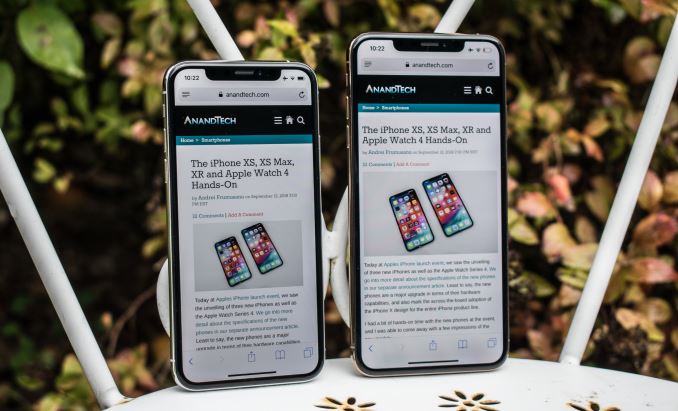
It’s been a little over three weeks since Apple unveiled the new iPhone XS, XS Max and the XR. The new flagship line-up is one of Apple’s most important ones to date; this year we’re seeing the company expand last year’s new iPhone X design across all of its new models, meaning big changes for all users. 2018 has been an odd year for the smartphone market as more than ever before we saw the competition try to react and also mimic the iPhone X – the design language especially has been something that we saw replicated across a lot of various designs.
Instead of iterating on the design, Apple has stayed true to its “S” generation release tradition and doubled down on what we saw last year with the iPhone X, all the while expanding the design across new form-factor phones as well. Today we review the first two of this year’s three new models: the iPhone XS, and its bigger brother the iPhone XS Max. The iPhone XR unfortunately releases later on this month – so we'll be taking a look at it separately.
Today we’ll be going into the detail of all aspects of the phone, included a much awaited deep dive of the new A12 SoC. Given Apple's ever-growing focus on the camera capabilities of their phones, I have also prepared an extensive camera comparison for this review – comparing shots across different modes on 14 devices. Hang in tight, this is a long one.
Starting off, let’s go over the specifications of the new iPhone XS and XS Max:
| Apple 2018 iPhone XS Specifications | |||
| iPhone XS | iPhone XS Max | ||
| SoC | Apple A12 Bionic 2 × Vortex @ 2.5GHz 4 × Tempest @ 1.59GHz |
||
| GPU | 4-core "G11P" @ >~1.1GHz | ||
| DRAM | 4GB LPDDR4X | ||
| Display | 5.8-inch OLED 2436×1125 DCI-P3/True Tone 625 cd/m² brightness 1M:1 contrast ratio 3D Touch |
6.5-inch OLED 2688×1242 DCI-P3/True Tone 625 cd/m² brightness 1M:1 contrast ratio 3D Touch |
|
| Size | Height | 143.6 mm | 157.5 mm |
| Width | 70.9 mm | 77.4 mm | |
| Depth | 7.7 mm | 7.7 mm | |
| Weight | 177 grams | 208 grams | |
| Battery Capacity | 2658mAh / 10.13Wh | 3174mAh / 12.08Wh | |
| Wireless Charging | Qi | ||
| Rear Cameras | 12 MP 1.4µm pixels, f/1.8, OIS Wide Color Gamut Quad LED True Tone Flash Portrait Mode, Portrait Lighting, Depth Control |
||
| 12 MP f/2.4 Telephoto, OIS 2x Optical Zoom Portrait Mode, Portrait Lighting, Depth Control |
|||
| Front Camera | 7MP f/2.2 Wide Gamut, Retina Flash, Portrait Mode, Portrait Lighting, Depth Control |
||
| Storage | 64 GB 256 GB 512 GB |
64 GB 256 GB 512 GB |
|
| I/O | Apple Lightning | ||
| Wireless (local) | 802.11ac Wi-Fi with 2x2 MIMO + Bluetooth 5.0 + NFC | ||
| Cellular | Intel XMM7560 Modem UE Category 16 LTE (1Gbps) with 4x4 MIMO and LAA |
||
| Splash, Water, Dust Resistance | IP68 up to 2 meters, up to 30 minutes |
||
| Dual-SIM | nano-SIM + eSIM nano-SIM + nano-SIM (China model) |
||
| Launch Price | 64 GB: $999 256 GB: $1149 512 GB: $1349 |
64 GB: $1099 256 GB: $1249 512 GB: $1449 |
|
At the heart of the new iPhones is the brand new Apple A12 SoC. The new chipset is the very first consumer piece of silicon that is being manufactured on TSMC’s new 7nm process. The new process promises greater transistor density and reduced die area of the chip, which gives Apple the ability to cram in more transistors in the same area, ultimately increasing the complexity and capabilities of the new SoC. We’ll go into more detail about the process node in a dedicated section, but least to say, in terms of sheer transistor counts it’s a healthy jump for Apple’s newest design.
The SoC’s CPU complex is now powered by two new “Vortex” CPU cores running at up to 2.5GHz, providing new levels of high performance. Apple claims the new CPUs perform around 15% better than last year’s A11 Monsoon cores – here it seems the company’s marketing was a tad conservative as the real performance figures of the new CPU are significantly higher. Alongside the performant Vortex cores, we see four new smaller efficiency cores named “Tempest”. The new small cores bring some performance improvements, but it’s mostly in terms on power and power efficiency where we see Tempest make some bigger leaps.
The A12’s GPU is the G11P – here Apple has made the biggest performance claims, advertising up to 50% higher figures. We’ll see how the new successor to last year’s A11 GPU in its dedicated section.
On the memory and storage side of things, we now finally see a significant boost in main memory capacity, as both the iPhone XS and XS Max sport 4GB of LPDDR4X RAM, up from 2GB and 3GB in the iPhone 8/X family. In terms of storage capacity, the new models come in 64, 256 and 512GB tiers. Here it’s a tad disappointing to see the base model come in at only 64GB, I think offering 128GB would have resulted in a much more even distribution in the models.
Front and centre of the new iPhones is the new “Super Retina” OLED display. Apple first introduced OLED displays in its lineup in the iPhone X – and the new iPhone XS and XS Max are a continuation of that panel, with an obviously bigger iteration for the Max. The displays are outright fantastic and among the best in the market, offering a fully colour managed wide "Display P3" gamut, very high brightness up to 650 cd/m², and excellent viewing angles. The iPhone XS has the same resolution as last year’s iPhone X, at 2436 x 1125 pixels, while the XS Max maintains the same pixel density by increasing the pixel count to 2688 x 1242.
On the back side, both phones are again a continuation of the iPhone X design. The glass back offers NFC and wireless charging capabilities. Wireless charging has seen an upgrade and claims to be able to charge faster, and also improve on the off-centre and off-axis charging performance.
Apple has worked with Corning to create a new formulation that is said to improve durability and scratch resistance. I’ll leave the testing of this to other people!
The sides of the phones come in highly glossy “surgical grade” steel. While I do appreciate Apple’s intent here, and I understand some people have personal preferences, I’m not a big fan of such finishes as I find them impractical and more slippery than the anodised aluminium of previous generation iPhones. It’s also a hell of a fingerprint magnet.
While the iPhone XS is more or less indistinguishable from the iPhone X – the one visual difference between the new and old is found in the lower left and upper right corners. The left microphone grill has halved its size and is only three holes wide now. Here Apple has introduced two new antenna cut-outs in the corners that serve the two new cellular antennas which enable the iPhone XS’ to achieve 4x4 MIMO.
Indeed in terms of cellular connectivity, the new iPhones boast a significant jump as we’ve seen an upgrade in download speeds to a gigabit for LTE networks. In terms of internals, this was achieved by now exclusively adopting Intel’s new XMM7560 baseband platform. This is Intel’s first chipset to support CDMA and also the first modem to be manufactured on Intel’s own 14nm process.
On the camera side of things we see the same dual 12MP camera module configuration as on the iPhone X – a normal wide angle and a zoom lens. The big difference with the XS is the upgrade in sensor size from an area of 32.8mm² to 40.6mm². Because the lens has remained the same and also offers the same f/1.8 aperture, the increase of the sensor size results in a slightly wider field of view than last year’s models. Light sensitivity has been increased thanks to the bigger sensor, and hence, the bigger pixels, increasing in size from 1.22µm to 1.4µm. The telephoto lens remains largely similar, with a 12MP 2x zoom module.
The iPhone XS Max in contrast to the iPhone XS is just a much bigger device. Apple noted that it’s calling it the “Max” instead of the “Plus” denomination, because it has no added features, and is just a bigger variant of the smaller XS. Here I applaud Apple for not making any feature discrepancies based on the model size – something I really hated in the past with the dual camera being found only on the Plus models.
The iPhone XS Max has a 3174mAh/12.08Wh battery while the smaller XS features a 2658mAh/10.13Wh battery. While Apple calls this the biggest battery ever in an iPhone, and that’s true, Apple is still a tad behind the battery densities that Android manufacturers have now come to commonly use in larger form factor phones.
Again, in a comparison between the iPhone X and the new iPhone XS – you’ll be hard pressed to see the difference and you’ll really have to focus to find the new antenna cut-outs to tell them apart.
Meanwhile the iPhone XS Max is largely the same form-factor as the iPhone 8 Plus, although the Max is technically 0.7mm narrower and 0.9mm shorter. For users opting for the larger models, the biggest difference is of course the massive increase in screen size, and I have to say, the XS Max does look very good due to its sheer screen-to-body ratio, which is higher than the smaller XS.
Finally the last big mention before we go deep into our review the price of the new phones. These new models are not successors to the iPhone 8 and 8 Plus – something I imagine the iPhone XR will have much more success in achieving – but rather continuation of the new high price points of the iPhone X. The higher storage capacity price points in particular are exceptional, coming in at $1349 for the XS and $1449 for the XS Max. If the price is worth it for you, is something you best decide along with us as we go deeper into the hardware of the new phones.



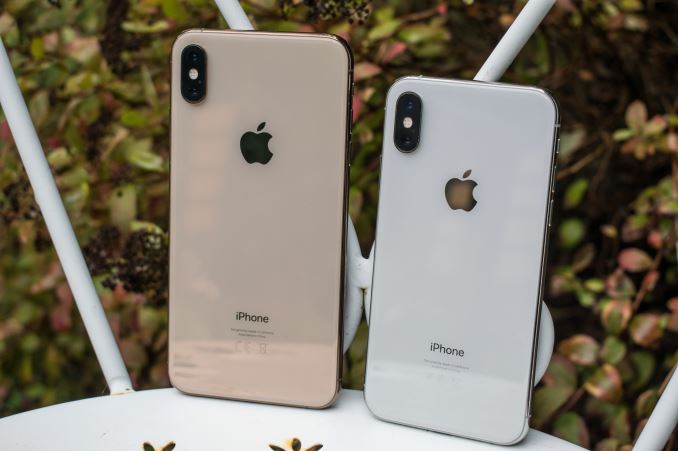

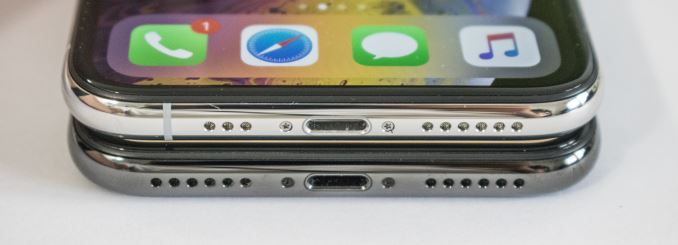
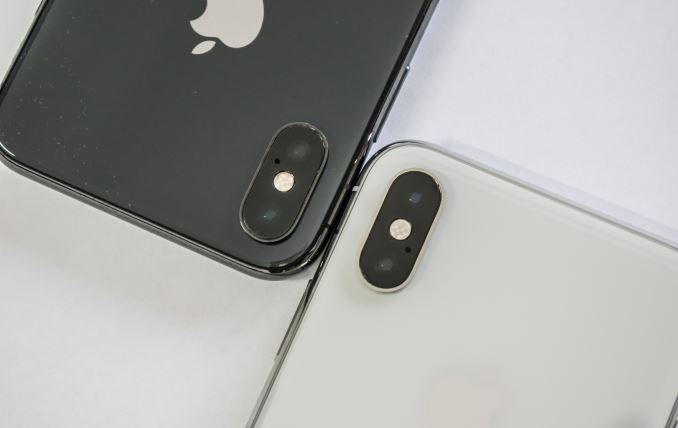
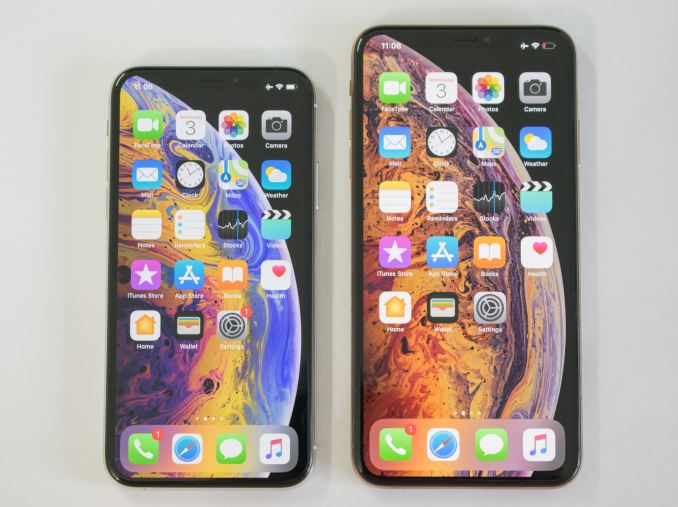
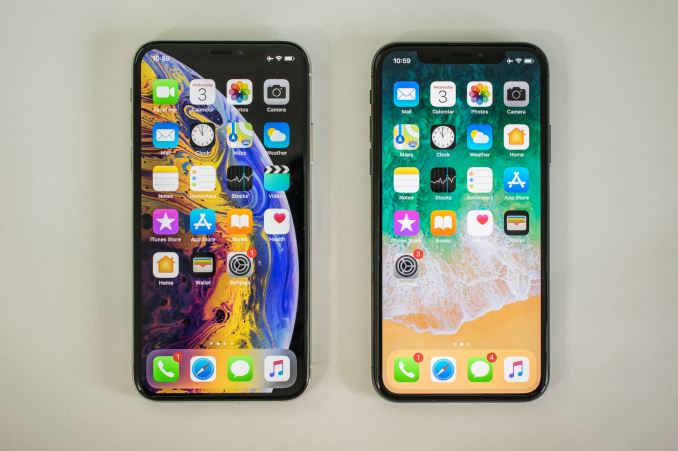
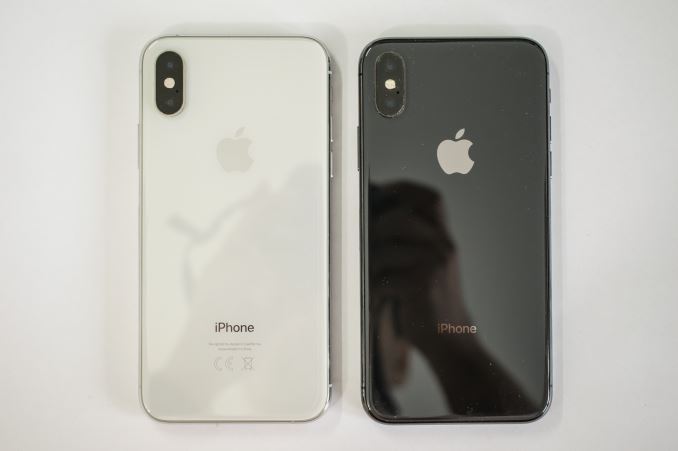
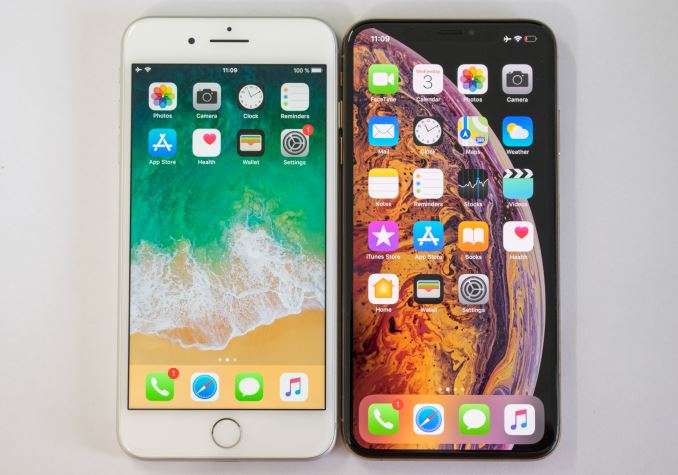
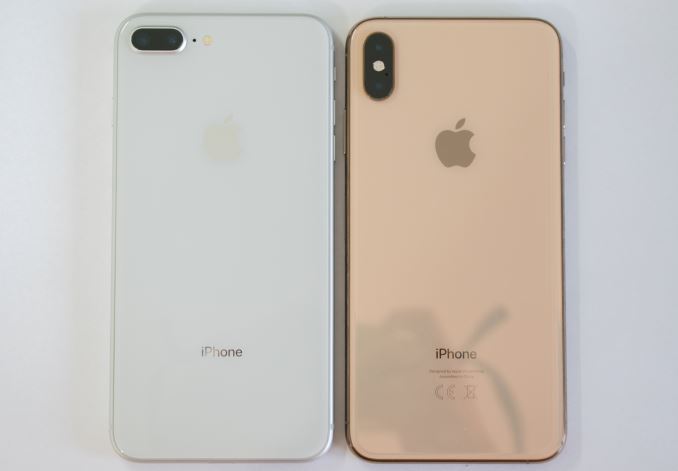








253 Comments
View All Comments
zepi - Saturday, October 6, 2018 - link
Otherwise a nice idea, but Datacenter CPU-market is too little to be interesting for Apple, as crazy as it is.Intel makes about $5b/quarter selling Xeons and other Datacenter stuff.
Apple makes some $50B. I don't think they can waste chip-development resources to design something for such a little "niche".
tipoo - Thursday, October 18, 2018 - link
Well, it would be largely reusing the R&D they already do for iOS chips, making the high performance cores is the hardest part, scaling them up to more cores would be a fraction the work.
varase - Tuesday, October 23, 2018 - link
The Enterprise server business is already a crowded field, and it's not really something Apple has any expertise with.In Apple terms, it's not like there's a huge profit potential there, even if they were successful.
Why put all that effort into learning, when most of their income comes from a portable consumer device they first released in 2007?
iwod - Saturday, October 6, 2018 - link
What are the other die area used for? The labels only has ~half of the die. I could add image signal processing, video encode and decode if that is not included in GPU. Some FPGA we know Apple had included in their SoC. But all that accounted that is likely less than 25% of that due space. What about the other 25%?Glaurung - Sunday, October 7, 2018 - link
Hardware accelerators for anything and everything that can be hardware accelerated.Plus the "secure enclave" is also on there somewhere - a fenced off, cut down SOC within the SOC for handling logins/unlocking and other security stuff.
Antony Newman - Sunday, October 7, 2018 - link
Andrei - This is an awesome review. Do you think Apple could roll out a low end laptop with 6 Vortex cores - or are there still SoC design areas that Apple still needs to address?AJ
Constructor - Sunday, October 7, 2018 - link
I'm not Andrei, but my speculation on this would be:• It would make no sense to start with the weakest Macs because that would put the transition to Apple's own CPUs in a bad light from the start. As in the Intel transition 12 years ago they would need to start with the middle of their lineup (with iMacs and MacBook Pros) in order to demonstrate the strength of the new CPU platform and to motivate software developers to jump on board, including actually working on the new machines full time if possible.
• They would need to have an emulation infrastructure for Intel legacy code in place like they did with Rosetta back then (also for Windows/Linux VMs!). And even in emulation that legacy code cannot be much slower than natively on then-current Intel machines, so their own CPUs already need to be a good bit faster than the corresponding Intel ones at the time in order to compensate for most of the emulation cost.
• As in 2006, this would have a significant impact on macOS so at announcement they would need to push at least developer versions of the new macOS to developers. Back in 2006 they had Intel-based developer systems ready before the actual Intel Macs came out – this time they could actually provide a macOS developer version for the then top-of-the-line iPads until the first ARM-based Macs were available (which already support Blutooth keyboards now and could then just support Bluetooth mice and trackpads as well). But this also means that as back then, they would need to announce the transition at WWDC to explain it all and to get the developers into the boat.
• Of course Apple would need to build desktop/notebook capable versions of their CPUs with all the necessary infrastructure (PCIe, multiple USB, Thunderbolt) but on the other hand they'd have more power and active cooling to work with, so they could go to more big cores and to higher clock speeds.
Again: This is sheer speculation, but the signs are accumulating that something this that may indeed be in the cards with Intel stagnating and Apple still plowing ahead.
I just don't think that it would be practical to put the current level of Apple CPUs into a Mac just like that even though from sheer CPU performance it looks feasible. These transitions have always been a massive undertaking and can't just be shot from the hip, even though the nominal performance seems almost there right now.
Constructor - Sunday, October 7, 2018 - link
Oops – this forum insists on putting italics into separate lines. Oh well.ex2bot - Sunday, October 7, 2018 - link
Not to mention they’d have to maintain two processor architectures for an extended period. By that, I mean, I doubt they’d transition high-end Macs for a long, long time to avoid angering pros... again.serendip - Monday, October 8, 2018 - link
A real left field move would be for Apple to release a MacOS tablet running ARM, like a Qualcomm Windows tablet. I wouldn't rule it out considering how Apple went from a single product for the iPhone and iPad to making multiple sizes.